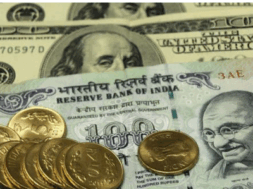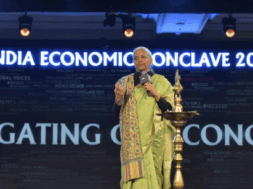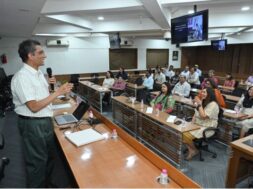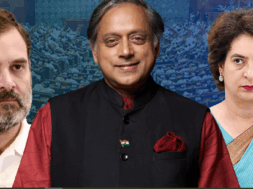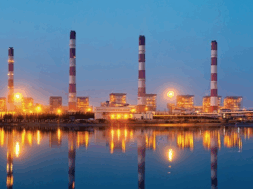
Union Budget FY25: Modi 3.0 plays safe, tries to please all as key Assembly polls loom
Virendra Pandit
New Delhi: The first full budget of the NDA government for 2024-25 reflects the economic and political compulsion of the Narendra Modi regime—keeping the two key allies (JD-U and TDP) in good humor for political stability, constraints of drawing up plans for the remaining two quarters (October 2024-March 2025), and mopping up resources without antagonizing many, and uncertainties in the geopolitical and geoeconomic areas.
That explains why the government played safe and did not make many big-ticket announcements. It tried to please the middle classes and taxpayers ahead of the key Assembly elections in Maharashtra, Haryana, and Jharkhand by the end of 2024, which would show the way ahead for the next fiscal budget (FY26).
With the government raising capital gains and derivatives taxes, the stock market reacted mutely as Sensex and Nifty settled marginally down after volatile trading.
In her Budget speech, Finance Minister Nirmala Sitharaman introduced personal income tax relief for four crore salaried and pensioners under the new tax regime, with the standard deduction increased from Rs. 50,000 to Rs.75,000. The deduction on family pension for pensioners will be enhanced to Rs. 25,000.
Referring to the Interim Budget for FY25, tabled in February before the General Elections, Sitharaman said the government has focused on four major castes: the poor, women, youth, and farmers.
The revised tax rate structure includes zero percent for income up to Rs. 3 lakh, 5 percent for Rs. 3-7 lakh, 10 percent for Rs. 7-10 lakh, and 30 percent for income above Rs. 15 lakh. Salaried employees in the new regime can save up to Rs.17,500.
The following are the key highlights of the Union Budget for 2024-25:
Part A:
* Five schemes to be announced, centered on youth, employment, and skilling benefiting 4.1 crore youth, entailing an outlay of Rs. 2 lakh crore;
* Proposal to allocate Rs. 1.48 lakh crore for education, employment and skilling;
* Focus on strengthening production, storage, and marketing for oil seeds including mustard, groundnut, soy, etc. Vegetable clusters to be developed across India;
* Provision of Rs. 1.52 lakh crore announced for agri and allied activities.
* Employment-linked incentives proposed. Enrolment in EPFO. Recognition of first-time employees.
(a) First-timers will receive a one-month wage from the government in three installments, as registered in EPFO, up to Rs. 15,000. Eligibility is for less than Rs. 1 lakh per month;
(b) Govt will reimburse up to Rs. 3,000 per month per employee for their EPFO contributions for up to Rs. 1 lakh per month salary;
* Allocation of Rs. 26,000 crore for the development of highways in Bihar. New airports, medical colleges, and sports infra will be constructed in Bihar.
* Financial Assistance worth Rs. 15,000 crore for Andhra Pradesh through multilateral agencies.
* Three crore additional houses under PM Awas Yojana;
* Over 100 branches of post-payment banks to be opened in the Northeastern region;
* Credit guarantee schemes for the purchase of machinery without collateral. Guarantee of Rs. 100 crore;
* New assessment model: the PSUs will build their own internal credit assessment model as per digital imprint.
* Credit support to the MSMEs during stress period (SMA account) guarantee. MUDRA loans’ limit doubled to Rs. 20 lakh;
* TReDS: Reduce the turnover threshold from Rs. 500 crore to Rs. 250 crore for buyers;
* SIDBI will open new branches to serve more MSMEs. Opening of 24 new branches this year;
* Proposal to allocate Rs. 2.66 lakh crore for rural development, a 40 percent hike year-on-year;
* Allocation of Rs. 3 lakh crore for the benefit of women and girls;
* PMAY Urban: An investment of Rs. 10 lakh crore (Rs. 2.2 lakh crore worth of central assistance in the next 5 years), with the provision of interest subsidy;
*Stamp duty moderation by states encouraged. More benefits for properties purchased by women.
* R&D for small modular nuclear reactor: Partnering with private sector firm; R&D Bharat small modular reactor; R&D funding for this sector;
* Facilitating the recycling of critical minerals and overseas acquisitions. The government will launch the auction of the first tranche of offshore blocks for mining, building on the exploration already carried out.
* Water supply and sanitation: The Center will support states along with multi-lateral agencies for water supply projects, sewage treatment, solid waste management, these services for the top 100 cities, and the use of treated water for irrigation and tank filling.
* Infra investment: Rs.11,11,111 crore, which is 2.4 percent of GDP announced (same as in the Interim Budget);
* PM Suryaghar Muft Bijli Yojana – free electricity up to 300 units/month
* PM Gram Sadak Yojana: Phase 4 will be launched.
* Assistance for flood management program in Assam, Himachal Pradesh, Uttarakhand, and Sikkim announced. Rs. 11,500 crore for the flood mitigation program in Bihar.
* Spiritual tourism – Vishwpat Temple Corridor and Mahabodhi Corridor in Bihar to be transformed into tourist destinations. Focus on the development program for Rajgir and Nalanda.
* Anusandhan (National Research): To spur private sector R&D with a financing pool of Rs. 11,000 crores;
* Space economy: facilitate setting up of VC fund worth Rs. 1,000 crore;
* Digitization of rural land records, mapping of rural pedestrian pathways in focus;
* NPS Vatsalya: investment by parents and guardians for minors which can be converted to NPS accounts seamlessly after attaining majority;
* Budget for 2025: Total receipts: Rs. 32.07 lakh crore, Total expenditure: Rs. 48.21 lakh crore;
* Gross/net borrowing target: Rs. 14.01 lakh crore/Rs.11.06 lakh crore;
* Projected fiscal deficit in FY25 4.9 percent and 4.5 percent in FY26.
PART B
* To cut down BCD on mobile phones, PCB charges to 15 percent;
* Seafood exports touched Rs. 60,000 crore in FY24. Frozen shrimp was 2/3rd of this. Proposals to reduce BCD on fish feed and shrimp to 5 percent;
* Reduce custom duty gold and silver to 6 percent;
* To increase BCD on ammonium nitrate from 7.5 percent to 10 percent;
* Solar Energy: To promote the domestic manufacturing supply chain, the government has decided NOT to extend duty exemption on capital machinery used for solar cells/modules, gases, and glass manufacturing. Negative for solar cell/module manufacturer;
* To promote domestic aviation and ship repairs and maintenance, the government will extend the export period for imported repair goods from six months to one year;
* TDS rate on e-commerce operators to be reduced from 1 percent to 0.1 percent;
* Proposal to de-criminalize TDS defaults;
* LTCG on financial and non-financial assets increased from 10 percent to 12.5 percent. STCG on certain financial assets is to be increased to 20 percent. Exemption on LTCG on certain assets increased to Rs. 1.25 lakh.
* Abolish angel tax to support start-ups. Proposal for a simpler tax regime for foreign shipping companies operating cruises in India;
* Safe harbor rates for foreign mining companies selling diamonds in India;
* Reduce corporate tax rates on foreign companies to 35 percent from 40 percent;
* STT on F&O to be increased to 0.02 percent from 0.01 percent;
* Income on buyback to be taxed in the hands of the recipient;
* Standard deduction to be increased from Rs. 50,000 to Rs. 75,000 under the new tax regime;
* Revised tax slab under the new regime:
Rs.0-3 lakh – NIL; Rs. 3-7 lakh – 5 percent; Rs. 7-10 lakh – 10 percent; Rs.10-12 lakh—15 percent; Rs. 12-15 lakh – 20 percent; above Rs. 15 lakh – 30 percent.

